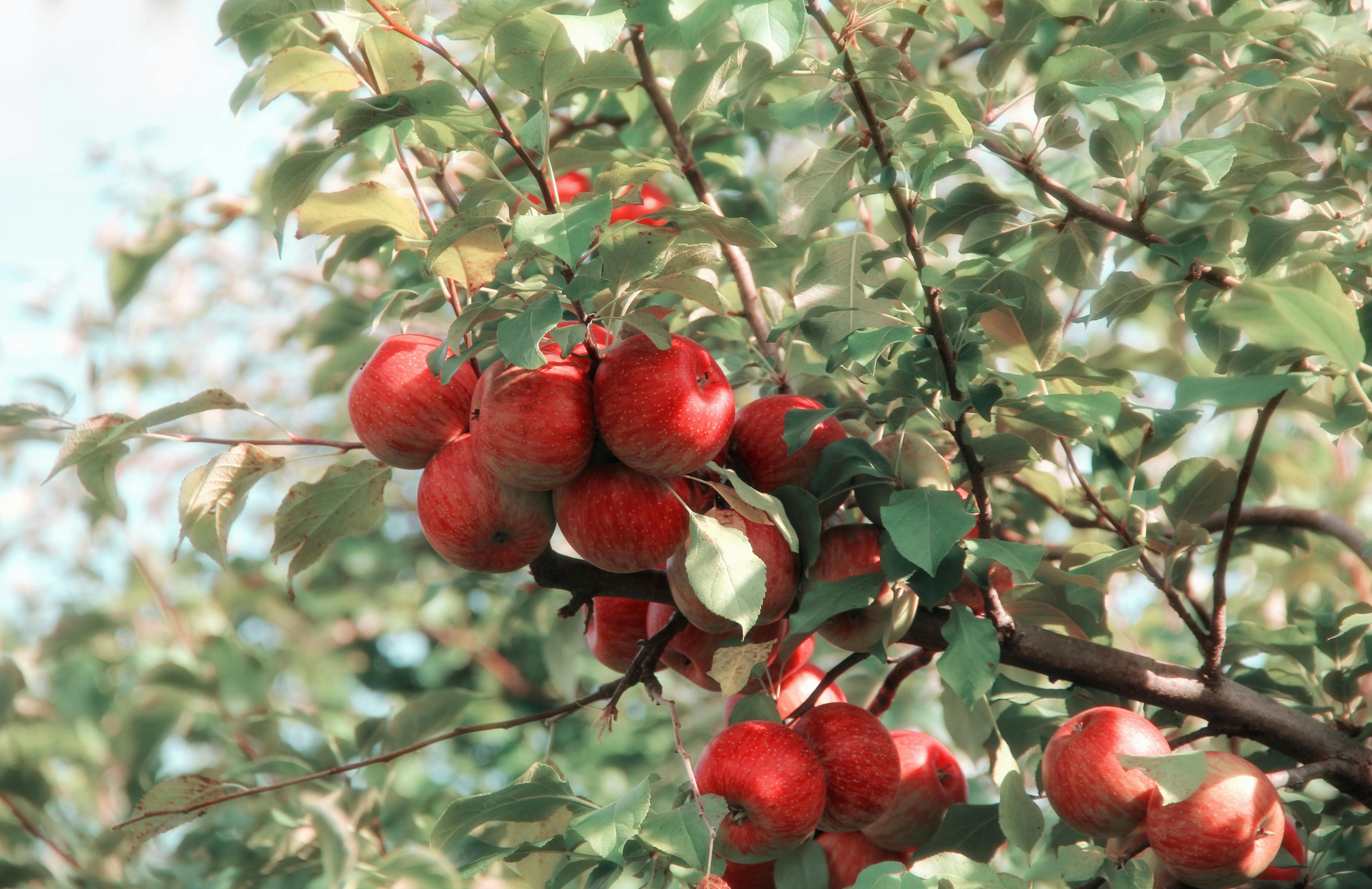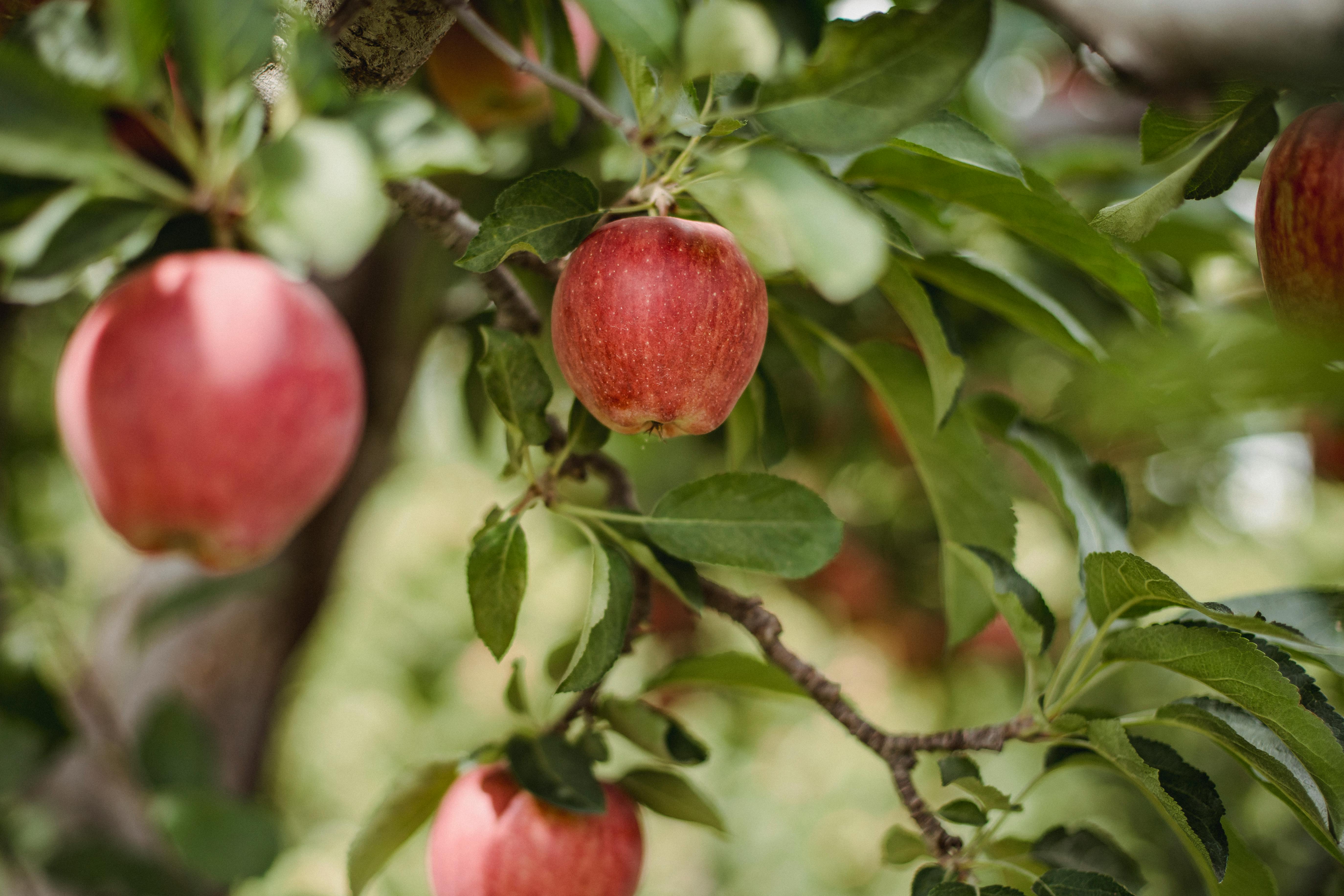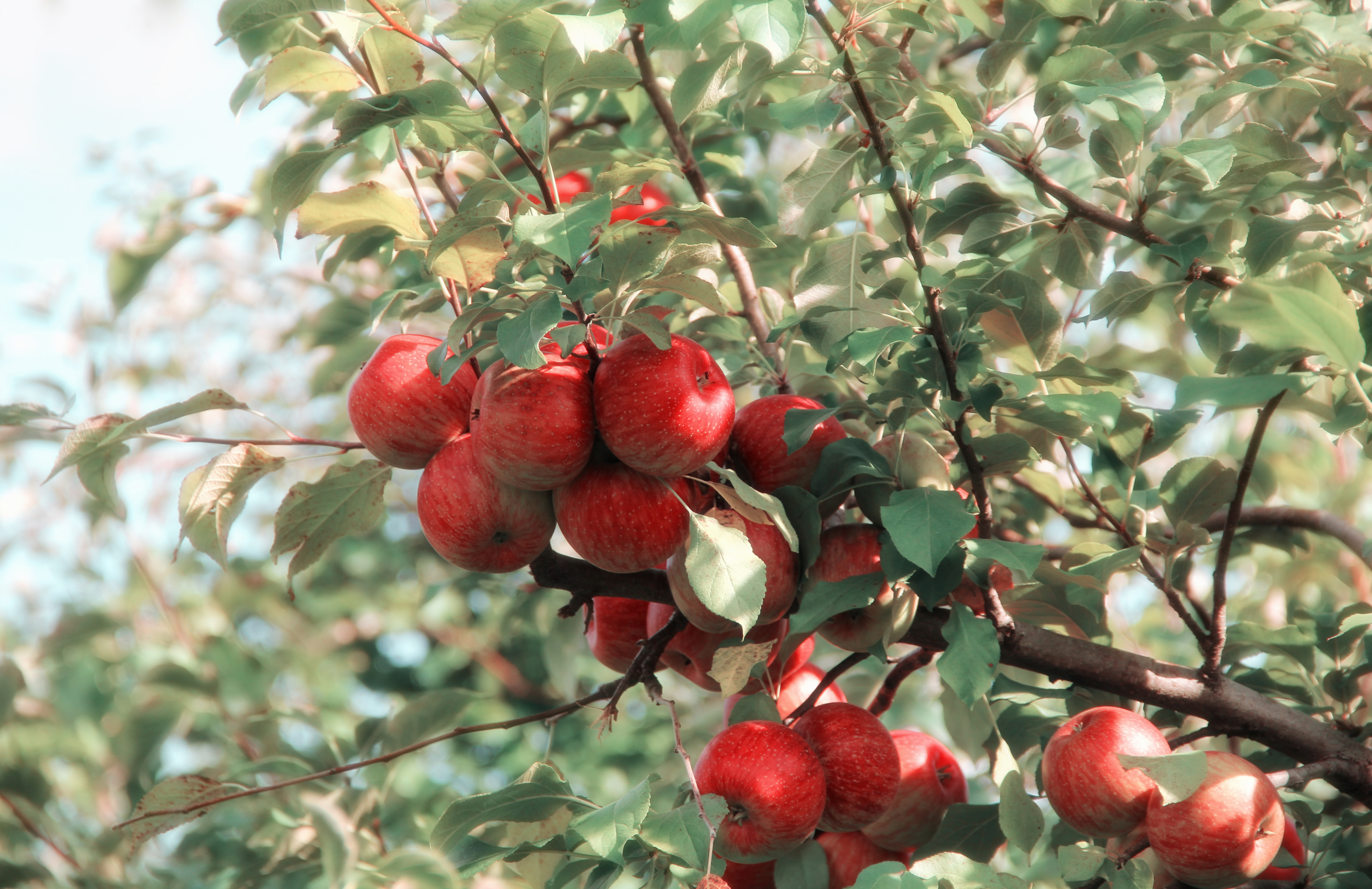Apple trees are a popular fruit-bearing tree that can produce a significant amount of fruit each year. They are relatively easy to grow, and they can provide delicious apples for years to come. But when do apple trees bear fruit? The answer to this question depends on several factors, including the type of apple tree, the climate in which it is grown, and the care it receives. In this article, we will explore these factors and discuss when an apple tree typically starts bearing fruit.Apple trees typically start bearing fruit 2 to 4 years after planting, depending on the variety.
Is There a Difference in Bearing Fruits Between Apple Trees Grown From Seed and Grafted Trees?
The answer to this question is yes, there is definitely a difference in bearing fruits between apple trees grown from seed and grafted trees. Apple trees grown from seed will take much longer to produce fruit, typically up to five or six years after the tree has been planted. Grafted trees, on the other hand, will usually produce fruit within two or three years of being planted. This is because the rootstock of the grafted tree has already been established and it just needs to be trained into its desired shape.
In addition to the time frame for producing fruit, there are also differences in the quality and quantity of apples that each type of tree produces. Apple trees grown from seed will often produce a variety of apples with different sizes, shapes, flavors, and colors. Generally speaking, these apples tend to be less sweet than those produced by grafted trees and may not keep as long either. Grafted apple trees are more likely to produce a higher quality and quantity of apples with more consistent size, shape, flavor, and color than those grown from seed.
When it comes to longevity and disease resistance, both types of apple trees will offer some degree of protection against common diseases such as scab and fire blight. However, grafted trees tend to have a greater level of resistance due to their rootstock having been bred for maximum disease resistance. As such, grafted apple trees may last longer than those grown from seed before needing replacement due to disease or pest damage.
Ultimately, whether you choose an apple tree grown from seed or one that has been grafted will depend on your individual needs and preferences. If you are looking for fast results with high-quality apples that can withstand diseases over a long period of time then a grafted tree would be your best bet. However if you prefer having a variety of apples with different characteristics then an apple tree grown from seed might be more suitable for you.
When Does the Tree Reach Maturity and Start Bearing Fruit?
The time it takes for a tree to reach maturity and start bearing fruit varies from species to species. Generally, it takes three to five years for a fruit tree to reach maturity and start bearing fruit. Depending on the type of tree, some may bear fruit as early as one year after planting while others may take up to seven years.
Climate also plays an important role in when a tree will reach maturity and start bearing fruit. In warm climates, trees tend to reach maturity faster and produce more fruit than in cooler climates. Additionally, the amount of sunlight a tree receives can also affect when it reaches maturity and starts bearing fruit.
The type of soil that a tree is planted in can also have an effect on when it reaches maturity and starts bearing fruit. Soil that is rich in nutrients will help a tree grow faster and produce more fruits than soils that are poor in nutrients or too compacted. Proper fertilization can also help speed up the process of reaching maturity and producing fruits.
Lastly, proper pruning is essential for encouraging healthy growth and helping trees reach their full potential for producing fruits sooner rather than later. Pruning should be done at least twice a year, once in late winter or early spring before buds form, and again in late summer or early fall after harvest season has ended.
Overall, how long it takes for a tree to reach maturity and start bearing fruit depends on multiple factors such as species, climate, soil quality, sunlight exposure, and pruning practices. With proper care and maintenance though, even the slowest growing trees can reach their full potential for producing fruits within three to five years from planting.
How Long Does it Take for an Apple Tree to Bear Fruit After Being Planted?
On average, it takes apple trees about four to six years to bear fruit after they have been planted. However, the exact amount of time it takes for an apple tree to bear fruit depends on the type of apple tree and where it is planted. Some types of apple trees are faster-growing than others, while some varieties of apples may take longer to reach maturity and start producing fruit. Additionally, environmental factors such as soil fertility and climate can affect how quickly an apple tree grows and produces fruit.
In general, most standard varieties of apple trees will begin producing their first crop of apples within four to six years after being planted. Dwarf or semi-dwarf varieties may take a little longer, usually between five and seven years before they bear their first crop. On the other hand, some varieties of apples can mature faster than others and may start bearing fruit in as little as two or three years after planting.
When planting an apple tree, it is important to choose a variety that is suited for the climate in your area. Also, make sure you plant your apple tree in well-draining soil that has been amended with plenty of organic matter such as compost or manure. This will help ensure that your apple tree grows healthy and strong so that it can produce its first crop of apples sooner rather than later.
Climate
The climate is one of the most important factors that affects an apple tree’s ability to bear fruit. Apple trees need a certain amount of chill hours in order to produce a good crop. If the temperatures remain too high or too low for too long, it can inhibit or even prevent the production of apples. In addition, extreme weather conditions such as hail or high winds can damage an apple tree’s blossoms, preventing it from producing fruit.
Soil Conditions
The soil conditions also have an impact on an apple tree’s ability to bear fruit. The soil must be well-drained and contain enough organic matter to provide adequate nutrients for the tree to thrive. Soil pH levels should also be tested and adjusted if necessary. If the soil is consistently waterlogged, this can create problems for the apple tree as well.
Pollination
In order for an apple tree to bear fruit, it must be properly pollinated by bees or other insects. If there is not enough pollination occurring, then the flowers will not be able to produce any apples. Additionally, if there are too many pests present such as aphids or caterpillars, they can damage the blossoms and prevent them from producing fruit.
Pruning
Pruning is also essential for good production of apples on a tree. Pruning should be done annually in order to keep the shape of the tree balanced and promote strong growth throughout its branches and limbs. Pruning also helps to remove diseased wood and dead branches which can prevent an apple tree from producing fruit.
Variety
The variety of apple chosen is also important when it comes to an apple tree’s ability to bear fruit successfully. Different varieties require different levels of chill hours and have different levels of pest resistance so selecting a variety that is best suited to your local climate will help ensure a successful harvest season each year.

When Does an Apple Tree Bear Fruit?
Apple trees typically begin to bear fruit in the late spring or early summer, depending on the variety of apple and the region where it is grown. Most apple trees will produce their first crop of apples after three to four years of growth and can continue to produce fruit for up to 20 years. The exact time when an apple tree will bear fruit depends on the climate, location, and type of apple tree. For example, some varieties are better suited for cooler climates and may not bear fruit until later in the summer.
Apple trees usually produce a full crop of apples every year, but it is possible for them to have a “light” year when they produce fewer than normal. Light years often occur due to environmental factors such as drought, too much rain, or extreme temperatures. Poor pollination can also lead to fewer apples on the tree than usual. When growing an apple tree in your garden or backyard, make sure you take good care of it and provide adequate water and fertilization throughout the growing season. This will help ensure that you get a full crop of delicious apples each year!
Knowing When an Apple Tree is Ready to Bear Fruit
Knowing when an apple tree is ready to bear fruit is important for successful apple production. It is essential for growers to understand the growth stages of the tree in order to identify when it is ready for harvest. There are several key indicators that can help you determine when your apple tree is ready to bear fruit.
Size of the Tree
The growth stage of an apple tree can be determined by its size and structure. Generally, a mature, fruit-bearing apple tree will reach a height of 8-10 feet and will have a strong trunk and branches that are able to support the weight of apples. If your tree has not yet reached this size, it may not be ready for fruit production.
Leaf Development
Apple trees should begin producing leaves in early spring. Leaves are important for the photosynthesis process, which helps the tree produce energy and grow strong. If you notice that your apple tree has thin or sparse foliage, it may not be mature enough to bear fruit yet. Additionally, if the leaves are discolored or wilted, it may indicate poor health and should be addressed as soon as possible.
Flower Production
Apple trees typically start flowering in late spring or early summer. The flowers will appear in clusters and can range from white to pink in color depending on variety. Once flowers have bloomed, they should develop into small fruits within 8-10 weeks if all other conditions are optimal. If your apple tree does not produce any flowers or they do not develop into fruits, then it may not be mature enough yet for fruit production.
By paying attention to these key indicators, you can ensure that your apple tree is ready to bear fruit when harvest time comes around. With proper care and attention, you can maximize your yield and enjoy delicious apples from your own backyard!
Can You Plant a Bare-Rooted Apple Tree and Get Fruits in the Same Year?
Yes, you can plant a bare-rooted apple tree and get fruits in the same year. In fact, bare-rooted apple trees are one of the easiest fruit trees to grow and care for. The success rate for these trees is generally high, so it is possible to get a good crop of apples from your bare-rooted tree in its first year.
Bare-rooted apple trees are available as either grafted or ungrafted varieties. Grafted apple trees have been grown from two different species of apple tree, with one species providing the rootstock and the other providing the fruiting variety. This makes them more disease resistant and easier to care for. Ungrafted trees are grown from seed, so they take longer to fruit and may not grow as well as grafted varieties.
Planting a bare-rooted apple tree is very simple; you just need to dig a hole that is twice as wide as the root ball of your tree and slightly deeper than it is tall. Place your tree into the hole, backfill around it with soil, water it thoroughly and then mulch around the base of your tree to protect its roots from temperature extremes.
Once planted, it is important to water your bare-rooted apple tree regularly during its first season; once a week should be sufficient if there has been no rain. Make sure you water deeply so that moisture reaches down to the roots of your tree. If necessary, feed your tree with an all-purpose fertilizer once or twice during its first season; this will help promote healthy growth and fruit production.
Finally, prune any dead or damaged branches off your new tree when necessary to keep it healthy and encourage vigorous growth. With proper care, you should be able to enjoy fresh apples from your own backyard this year!

Conclusion
Apple trees can take up to four years to bear fruit, but once they do, they will typically produce a bountiful crop every year for many years. The type of apple tree you choose is important as it will determine the time it takes to fruit as well as the type of apples you will get. If you are willing to wait a few years, apple trees are an excellent addition to any garden and can provide delicious, organic apples for many years.
Once you plant an apple tree, there are a few things that you can do to ensure that your tree will bear fruit as soon as possible. Pruning and fertilizing your tree annually is necessary for its health and growth. Additionally, providing adequate sunlight and water will help ensure that your tree receives the nutrients it needs in order to produce fruit.
In conclusion, apple trees can take up to four years before bearing fruit, but with proper care and attention they can provide a bounty of delicious organic apples every year. Although it may take some patience, growing your own apple tree is a rewarding experience that can bring joy and deliciousness for many years.



